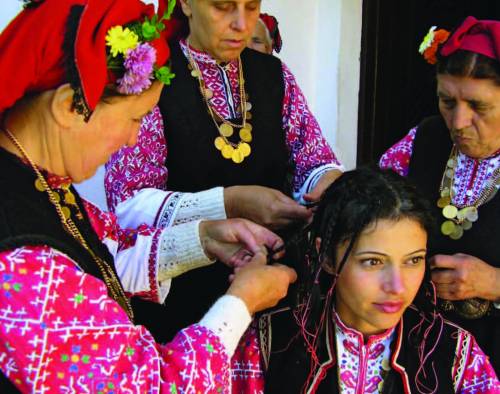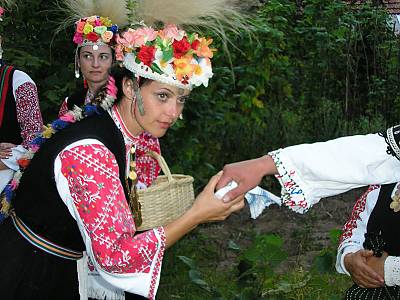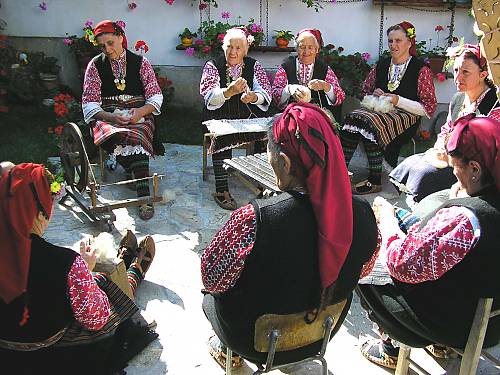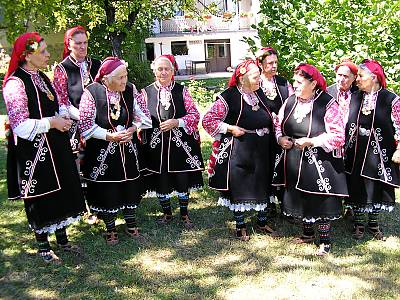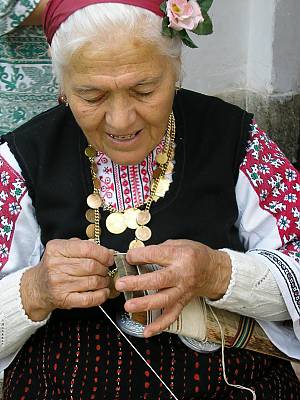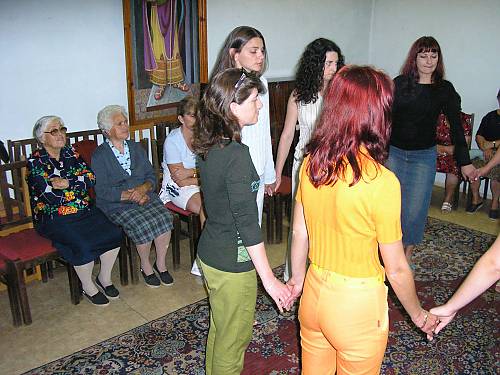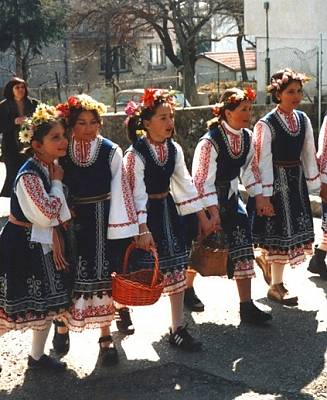Bistritsa Babi, archaic polyphony, dances and rituals from the Shoplouk region
Inscribed in 2008 (3.COM) on the Representative List of the Intangible Cultural Heritage of Humanity (originally proclaimed in 2005)
The traditional dances and polyphonic singing found in the Shoplouk region of Bulgaria are still performed by a group of elderly women, the Bistritsa Babi. This tradition includes diaphony, or what is known as shoppe polyphony, ancient forms of the horo chain dance and the ritual practice of lazarouvane, an initiation ceremony for young women.
Diaphony is a specific type of polyphonic singing in which one or two voices build the melody consisting of izvikva meaning “to shout out” and bouchi krivo meaning “crooked rumbled roars”, while other singers hold a monotone drone that is doubled or trebled to produce a more sonorous sound that accompanies the lead singers.The dancers, dressed in traditional costumes, hold each other by the waist or belt and dance in a circle, stepping lightly and moving counter-clockwise. A number of variations are performed within this structure, depending on the song and ancient ritual purposes.
Although the social function of the polyphonic singing has changed over the twentieth century, as it is now primarily performed on stage, the Bistritsa Babi are regarded as an important component of the region’s cultural life, promoting traditional expressions among the younger generations. The women are among the few remaining representatives of traditional polyphony and the village of Bistritsa is one of the last areas in Bulgaria in which this cultural expression has been maintained over the centuries.
Due to its location near the capital Sofia, which offers a range of cultural attractions, young people’s interest in communitybased traditions is declining. Over the years, the rich repertoire of songs and dances has been reduced to include only the most popular highlights to be performed on stage.



